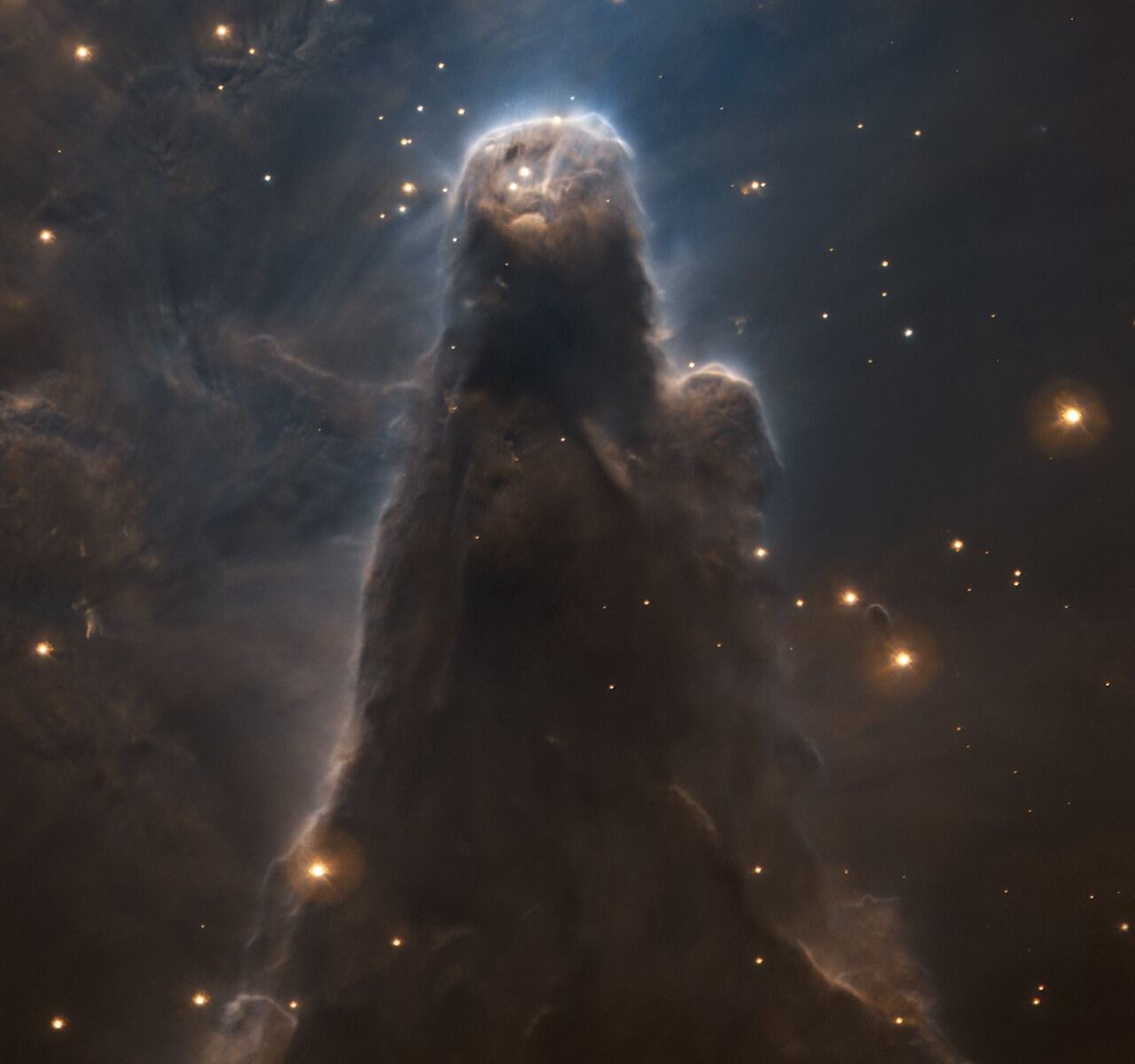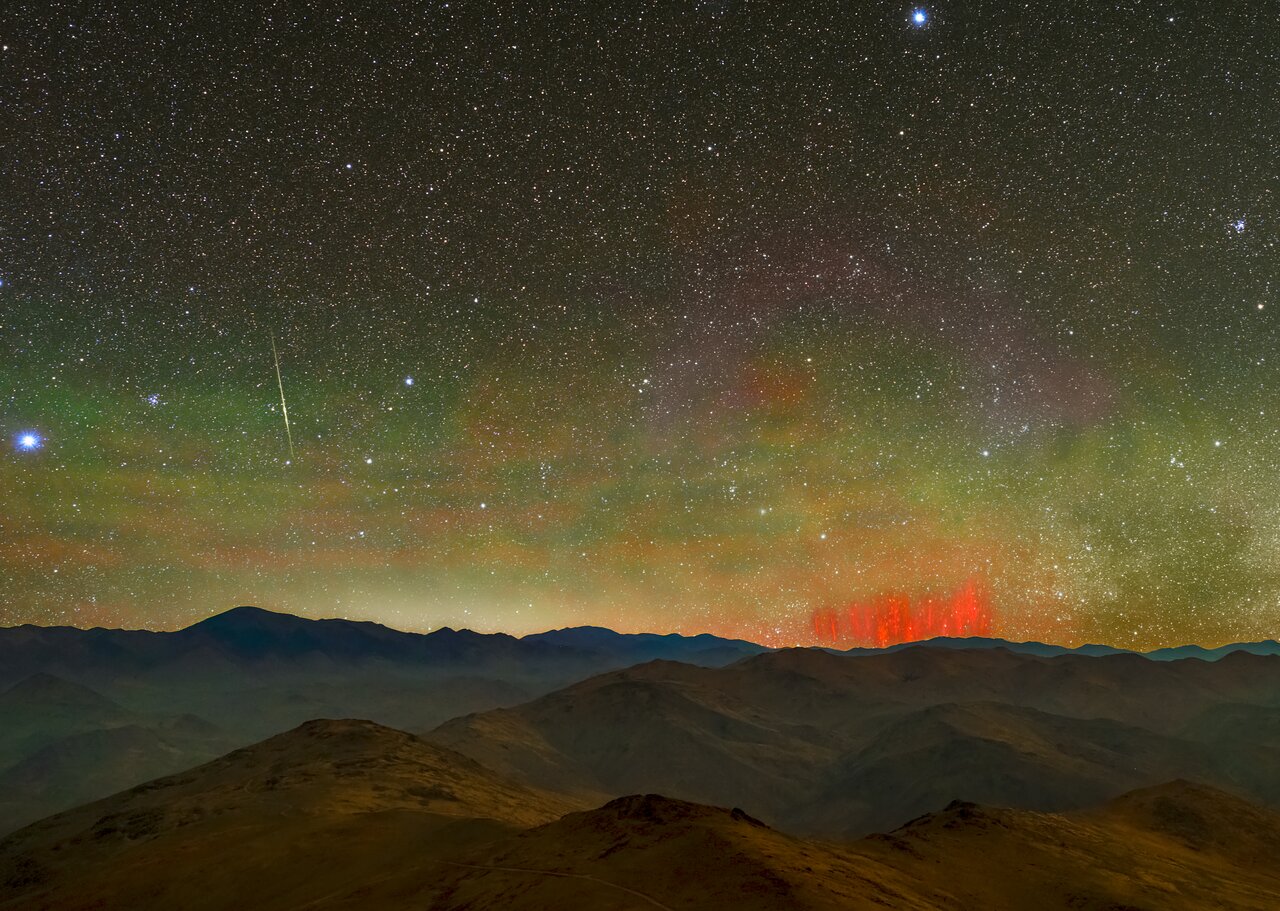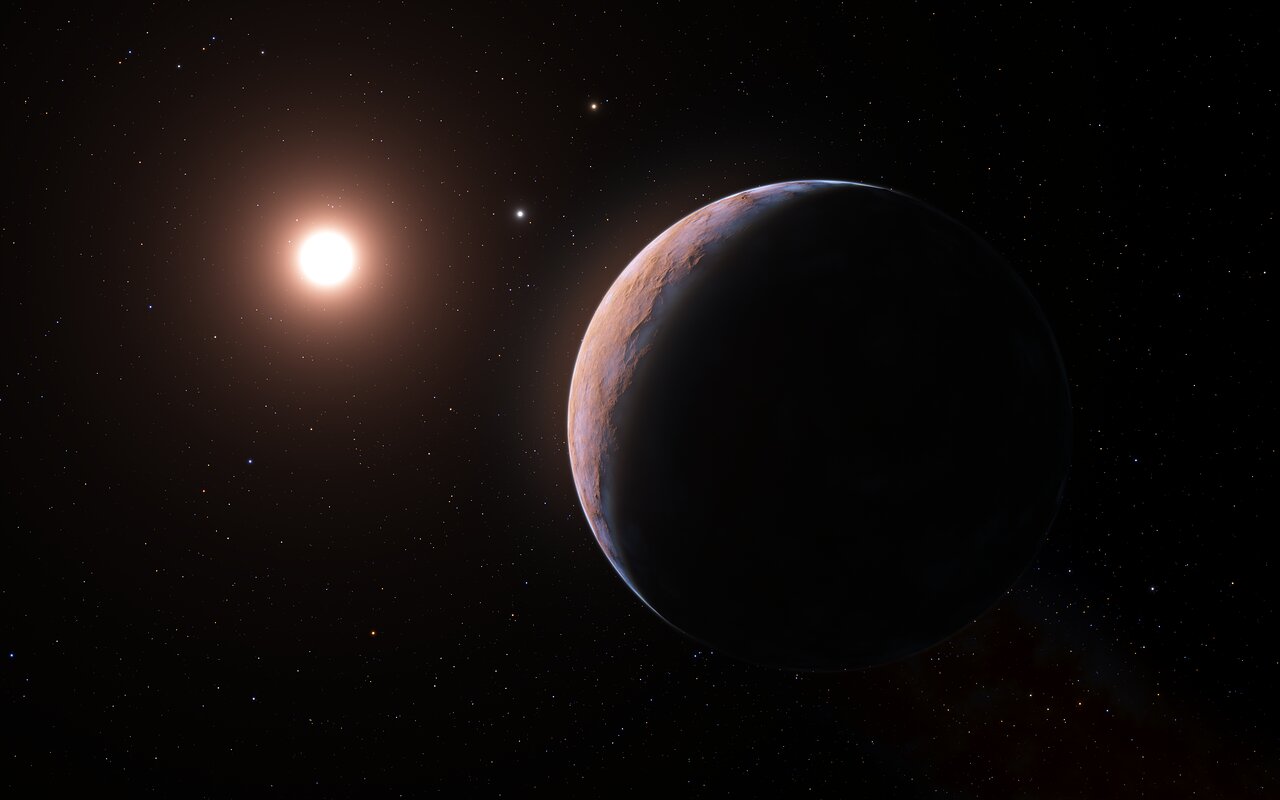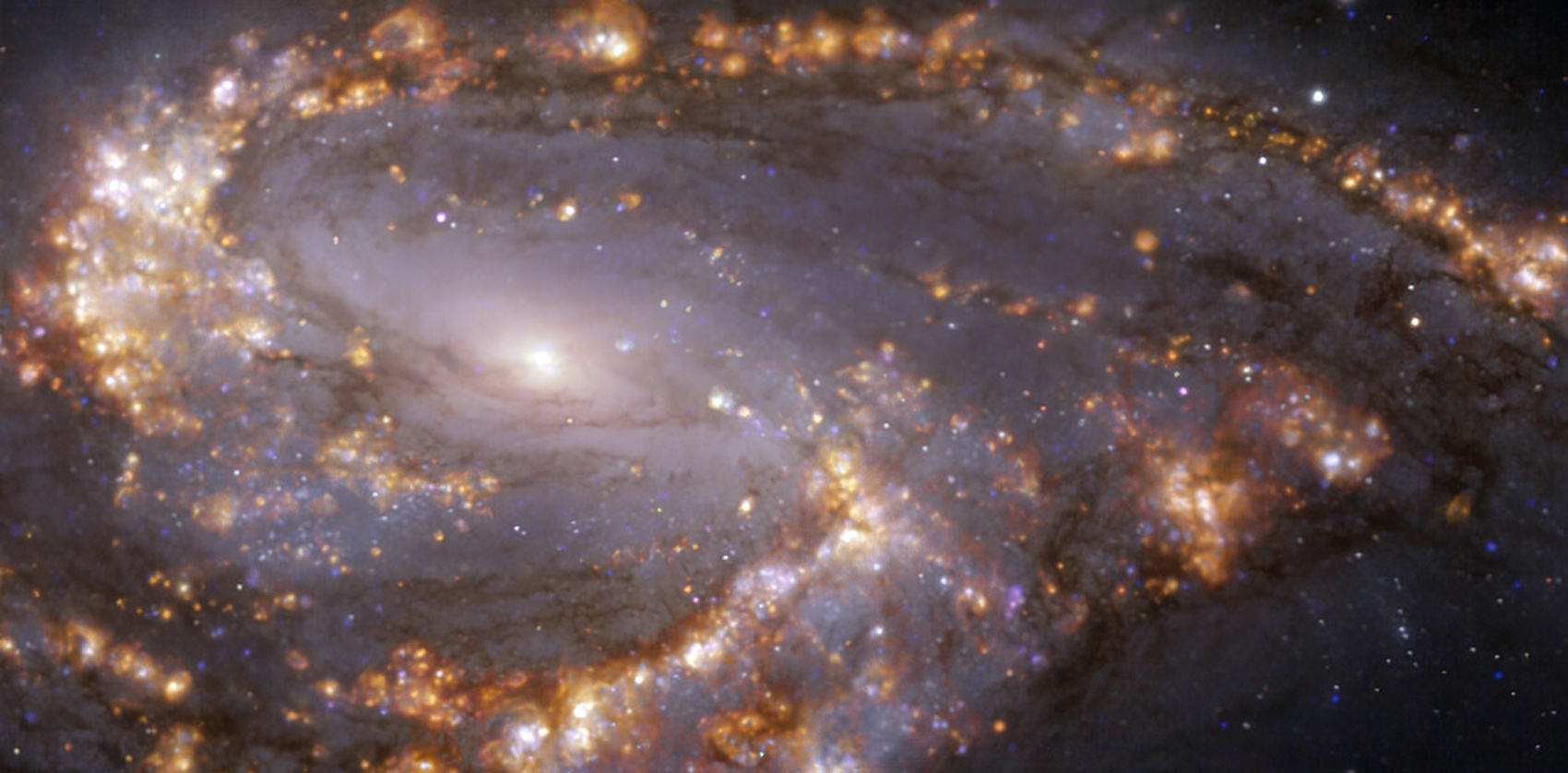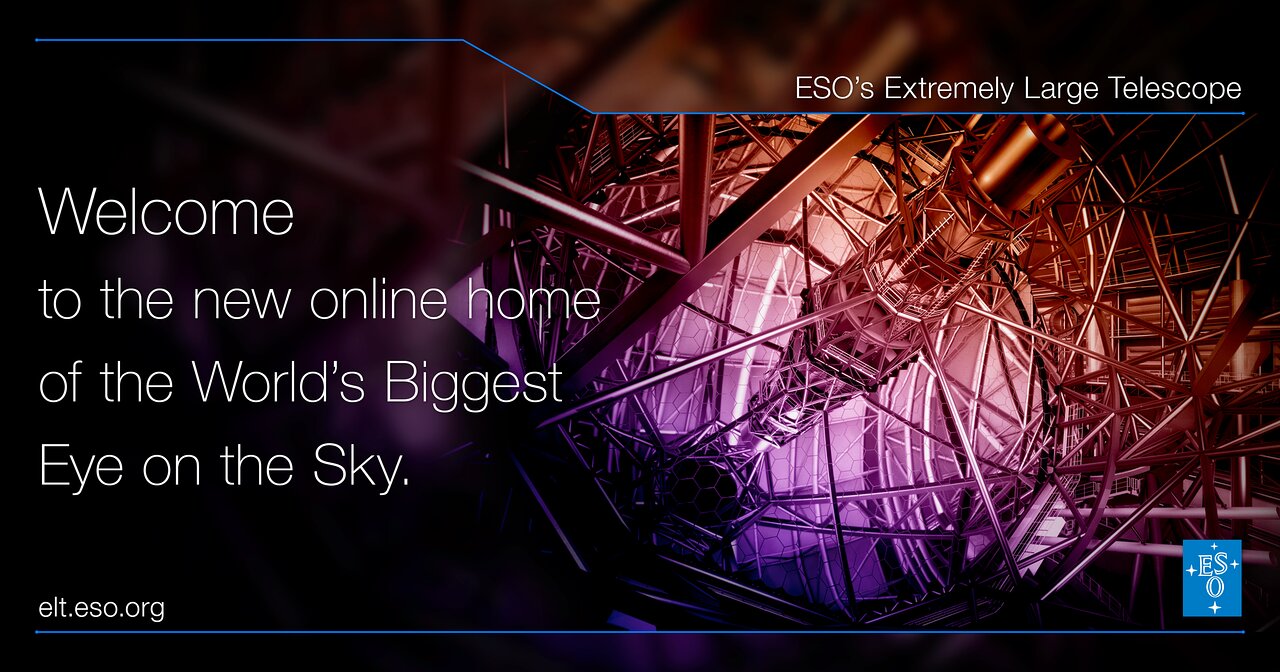Here’s a dramatic and spectacular new view of the Cone Nebula, as seen by the Very Large Telescope (VLT). This nebula is part of a distant star-forming region called NGC 2264, which about 2,500 light-years away. Its pillar-like appearance is a perfect example of the shapes that can develop in giant clouds of cold molecular gas and dust, known for creating new stars.
Continue reading “A New View of the Cone Nebula From the Very Large Telescope”A New View of the Cone Nebula From the Very Large Telescope
